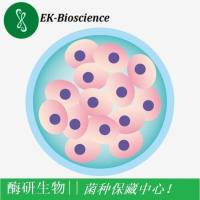Dopamine Receptor Binding and Quantitative Autoradiographic Study
互联网
430
The central nervous system (CNS) dopamine system plays an important role in mediating the reinforcing effects of drugs of abuse (1 ). In addition, dopamine receptors have been the principal target of drugs employed in the treatment of neuropsychiatric disorders such as schizophrenia and Parkinson’s disease. Until 1990, the dopamine receptor population in the brain and periphery was believed to consist of two subtypes, D1 and D2 , which were distinguished by their pharmacology and coupling to signal transduction systems (for review see ref. 2 ). D1 and D2 receptors exhibit similar distributions in brain with the highest densities in the striatum (for review see ref. 3 ). A number of selective radioligands have been synthesized and extensively used to characterize the classical dopamine receptor subtypes. These radioligands include the D1 -selective ligands [3 H]SCH 23390 and [125 I]SCH 23982. D2 receptor-selective ligands include the antagonists [3 H]spiperone, [3 H]YM 09151-2, and [125 I]iodosulpiride and the agonists [3 H]propylnorapomorphine and [3 H]quinpirole.









